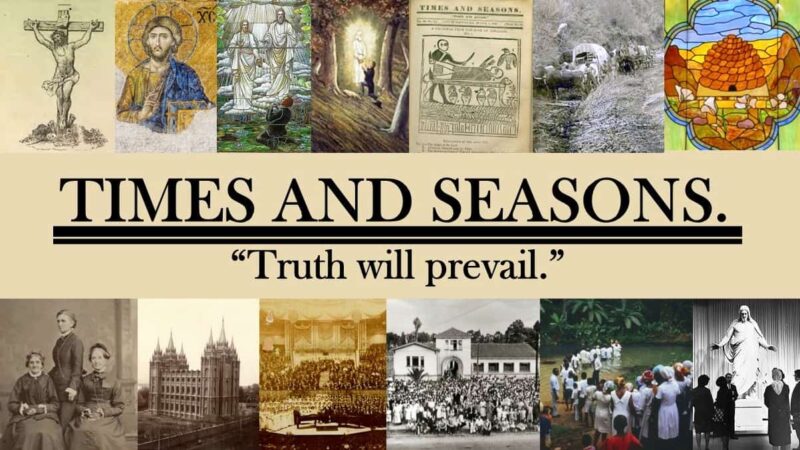The Church Historian’s Press recently published a history of the Young Women’s organization in the Church entitled Carry On: The Latter-day Saint Young Women Organization, 1870–2024. In connection with the release of this landmark study, Lisa Olsen Tait discussed the book in a recent interview at the Latter-day Saint history blog From the Desk. What follows here is a copost to the full interview.
As to what the book is and its significance, Lisa Olsen Tait offered some insight:
Carry On: The Latter-day Saint Young Women Organization, 1870-2024, is the first comprehensive, scholarly history of the organization. It is a narrative history within an analytic framework. We trace the institutional thread—how the organization developed—in tandem with a cultural thread—how the organization’s development grew out of and responded to cultural currents and changing times, both in the church and the broader society. …
Carry On is fundamentally a scholarly book. It traces a detailed historical narrative, drawing on thousands of primary sources and incorporating theoretical analysis from many secondary academic sources.
That said, we worked very hard to write the book in a way that would be accessible and engaging. This was the main reason for bringing James Goldberg, a gifted storyteller and narrative thinker, onto the project. And he delivered. Riley Lorimer edited the entire manuscript and worked wonders, combining our disparate styles and voices and creating a very readable text. So we think and hope that almost any interested reader will find the book engaging.
It has been in the works for at least a decade and is a notable contribution to Latter-day Saint history more broadly and women’s history in the Church specifically.
The process of writing a history like this can be challenging, especially given the sources that are available:
Ironically, our challenge was both the lack of sources and an incredible wealth of sources. At the Church History Department, we are sitting on a gold mine of materials—local records, board minutes, publications, oral histories, diaries, letters, and countless files and scrapbooks maintained by Young Women leaders over the years. In this sense, we had an embarrassment of riches.
At the same time, there were big gaps in the record, especially in terms of the first-person voices and experiences of young women and their leaders over time and across the world. We quickly realized that we would not be able to do everything we would have liked to do, especially in recounting girls’ experiences and local units’ activities.
In most archives, including the church’s, collecting first-person accounts from young people hasn’t been a priority. Many of the materials that would help us flesh out the ground-level experience—things like handouts, agendas, and even photographs—are usually considered ephemeral and discarded once they’ve served their purpose.
The source base also shifted significantly from era to era. Early on, we had a lot of wonderful local minute books kept in the handwriting of local secretaries. Those faded away in the early twentieth century, but by that time, there were a lot of publications—handbooks, manuals, magazines—that laid out the programs. There are also a lot of newspaper articles from the mid-century. As the programs were streamlined in the correlation era, many of those publications went away, but we were able to access or create oral histories with women who lived through those times.
So, the source base shifted, but we always had a lot to work with.
It makes me wonder if between Saints and this volume, the Church History Library will maintain a greater focus on gathering the sources that they found lacking during the process.
One interesting thread that surfaced a few times in the interview was Correlation and its impact on the organization. For example, Tait shared that
Harold B. Lee announced the correlation movement in 1961, and in that decade, it mainly operated in the background as far as the youth organizations were concerned. However, in the 1970s, there was a period of extensive, difficult, and sometimes tumultuous change.
In 1974, the YWMIA was renamed simply Young Women, and the YMMIA became known as Aaronic Priesthood, in keeping with the correlation emphasis on priesthood.
The close working relationship between the YW and YM was severed, as were most communication lines between general and local young women leadership. Instead of a highly centralized, prescribed program sent out by the general boards each year, the Young Women organization began to operate locally, under the direction of bishops and ward YW presidencies. The activity focus was shifted toward youth leadership and service, and an emphasis on a spiritual core. …
In the 1980s, Ardeth Kapp established a new framework for the organization that got it back on its feet and structured the programs for thirty-five years.
She added that as the organization adapted to the globalization of the Church,
Much of the effort to simplify and make Young Women programs more universal, in the correlation era and since, has been driven by increasing recognition of the need to strip the cultural elements away from the core gospel message to help young women receive the latter. In many ways, it has been like peeling an onion: Young Women leaders have continually found new layers that need to be discarded or reexamined. We tell some of those stories in chapter nine of Carry On: The Latter-day Saint Young Women Organization, 1870-2024.
Correlation was a major part of the shift towards unified direction in a global church, but provided its own challenges in the process.
For more on Carry On: The Latter-day Saint Young Women Organization, 1870–2024, head on over to read the full interview with Lisa Olsen Tait at the Latter-day Saint history blog From the Desk.
